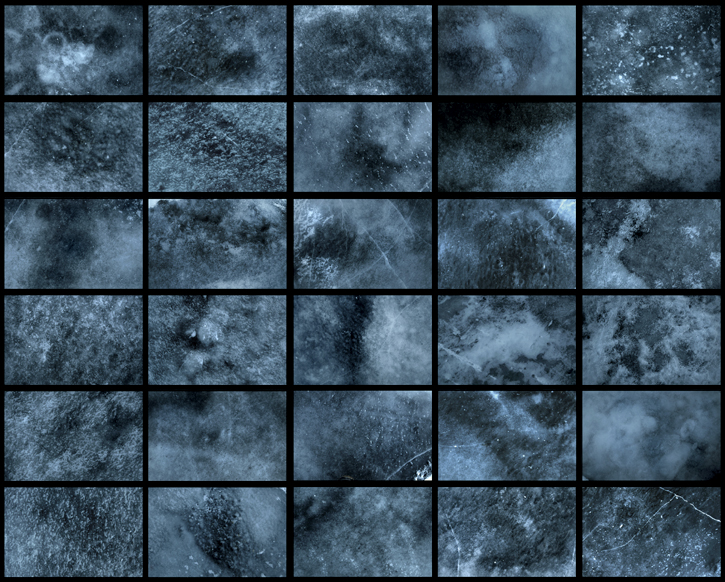|
|
 |
|
|
|
 |
|
| Project: OUT THERE (IN THIS WORLD) | |||
| Sound/photo installation | |||
| OUT
THERE (IN THIS WORLD) 2010 Sound/photo installation. 3 speakers mounted directly into wall beside 30 colour photographs of ice. |
|||
| << back | |||

|
|||
| Audio track:
BEGINNING 3.06 min
MIDDLE 1.46 min END 3.26 min Location: EISCAT facility, Adventsdalen, Svalbard Photo/sound
installation OUT THERE (IN THIS WORLD), 2010 is inspired
by a scientific/commercial event at EISCAT facility in Svalbard, June
'08. EISCAT, a incoherent scatter radar system, is used to study many
different phenomena in the upper atmosphere and ionosphere and is
located in an area outside Longyearbyen, Svalbard.
The photo/sound piese deals with commercialism and capitalism vs science, climate awareness and constant search to understand the world.
|
|||
|
|||

|
|||

|
|||
|
OUT
THERE (IN THIS WORLD),
2011. 30 colour photographs and sound. Installation view at ELASTIC
gallery, Malmö
|
|||
Text in Swedish: OUT THERE (IN THIS WORLD) utgår från en vetenskaplig/kommersiell händelse på EISCAT anläggningen på Svalbard i juni -08. EISCAT används för att studera många olika fenomen i övre atmosfären och jonosfären och är placerad vid gruva 7, här slutar allmän väg. Under min vistelse på Svalbard under november 2008 gjorde jag ljudupptagningar på platsen. Tystnaden är påtaglig men genom den starka elektromagnetiska strålning som anläggningen avger är ljudet som spelas in pulserande störningar som skiftar i styrka. Ljudupptagningen har bearbetats och är en del i en installation med tillhörande fotografier.
Catrin Andersson, 2011 |
|||
 |
|||
 |
|||
 |
|||
View
of the EISCAT facility located 3 km from Longyearbyen, Svalbard. |
|||